12 benefits of gardening from recent research
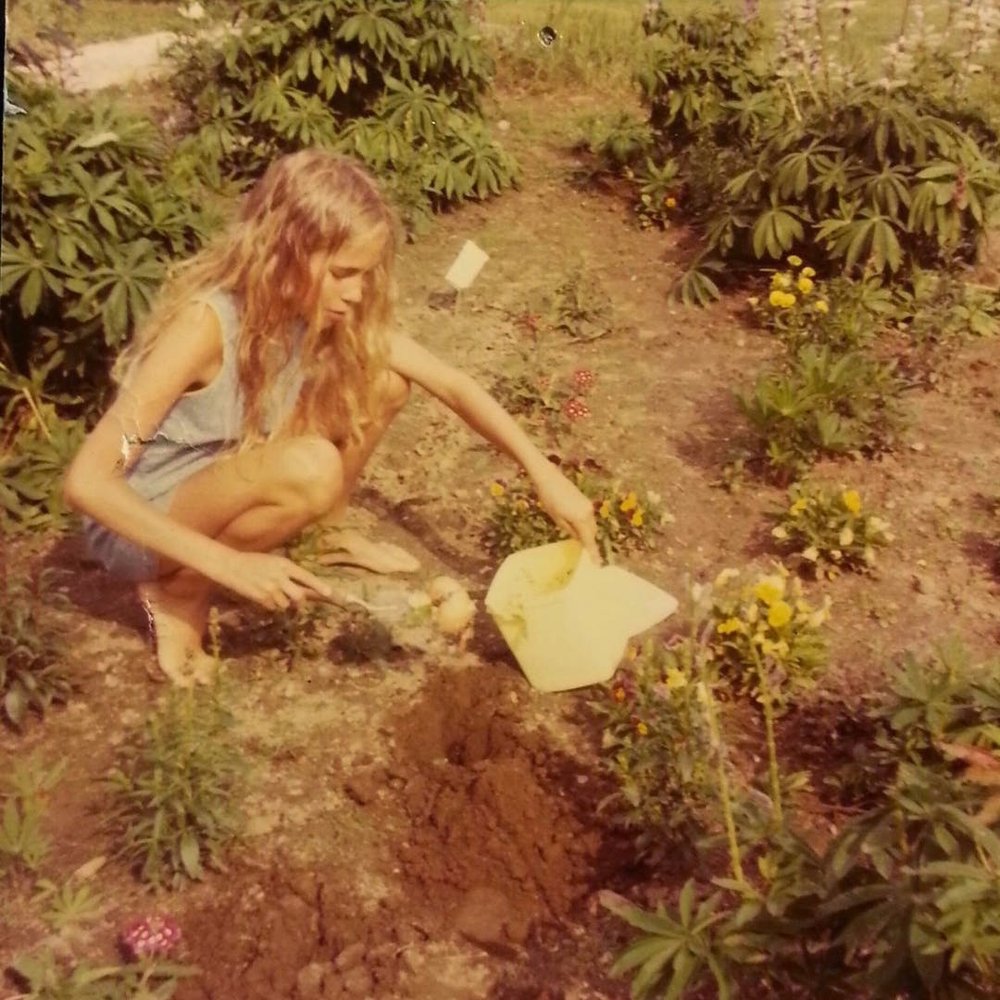
Legacy is a benefit of home gardening. This is me, a Brooklyn kid burying food waste in my grandmother's New Hampshire garden, circa 1970
Dear Avant Gardener, I am hoping to add more native plants to my shared backyard (both to support wildlife and improve the view from my living room). Earlier this year my co-op planted a red bud to replace another small tree that had died. They planted four sad hostas around it and left a bunch of bare dirt. I bought some low-bush blueberry on sale this fall and added them to the bed (we have a large high bush thriving elsewhere in the garden). What else might I plant beneath the red bud to support pollinators? — Laura, New York City
Yes, to views, views, views! Too often, we Americans think of how a garden looks from the road, whereas we’ll experience more pleasure from beauty seen from inside, where — for better or worse — we spend most of our time.
In addition to helping wildlife, increasing the size of the area you plant will make you happier and healthier, according to several recent studies on the benefits of home gardening compared to visiting parks or even community gardening. See my summary in “Why?” below.
Planting beneath the redbud and around the blueberries will create what entomologist Doug Tallamy calls a “pupation station” for butterfly and moth larvae. Your blueberries host 295 species of moths and caterpillars, many of which will drop to the ground and overwinter under whatever you plant. You’ll recall the vast majority of backyard birds feed their nestlings carotene-rich caterpillars, not seeds, requiring hundreds a day. The redbud itself hosts only the redbud leaf-folder moth — and is its only host — but its flowers provide nectar for native bees and hummingbirds in early spring when it is scarce and birds and squirrels eat its seeds.
Given the formalism of the brick wall behind the redbud and surrounding Tudor houses in the photo you shared, I’d love to see a tight color palette of flowering perennials — perhaps lavender like the redbud’s flowers, plus white to stand out in the shade and glow in the moonlight. See my recommendations below in “Wow!” These plant choices will be available in spring at Brooklyn’s Lowland’s Nursery, which carries natives adapted to urban conditions. As usual, I recommend planting roughly one perennial per square foot.
If you have space, would you consider amping up the formality (and winter view) by enclosing the area in a low evergreen hedge of dwarf inkberry (like this Gem Box)? It looks like traditional box with the added benefit of hosting 45 moths and caterpillars. Plant them close together and keep them clipped.
And how about training some vines up that brick wall? As I said, the more you plant (and tend) the happier you’ll be. That’s science:) Consider Virgin’s bower for white summer blooms in sun to part sun and Virginia creeper for rich fall color in part shade to shade. They will not damage the brick the way invasive English ivy does.
Happy holidays!
— The Avant Gardener
Why, How, Wow!
Why?
Why garden? Surprisingly, public health and landscape planning researchers have only studied the value of home gardens, as opposed to community gardens, in the past five years. They found home gardening has unique health and wellness benefits, which have important public policy implications at a time of increasing urban density. According to a U.K. study of more than 6,000 gardeners and non-gardeners,
Increasing frequency of gardening correlated with health benefits. … Pleasure though, not health, was the prime motivator to garden. — Cities
Here are 12 benefits you can expect from ecological home gardening, according to recent research:
No. 1: Social interaction
While community gardening has been found to foster community, duh, researchers into the co-benefits of home gardening for biodiversity were surprised to find social interaction to be the No. 1 benefit, cited even more frequently than connection with nature.
In many cases, the gardening activities were inextricably linked with the wider social context of enjoying the yard with friends and family (e.g. outdoor dinners, garden tours, etc.). Recognition through … certification, from passers-by or from friends and family in the home garden provided gardeners with the confidence to engage in wider community gardening or volunteering initiatives. — Local Environment
Social interaction did not emerge as an important theme in similar in-depth interviews with home gardeners generally. Because gardening for biodiversity is novel, it elicits curiosity in others. And because it presents challenges beyond traditional gardening (like simply finding plants!), it both requires and builds a kind of passion that promotes connections, whether through proselytizing (guilty!) or searching out and connecting with like-minded individuals and communities.
No. 2: Greater connection to nature
Connection to nature was one of five thematic benefits of gardening identified in in-depth interviews with British home gardeners generally, as well as among Canadians gardening primarily for biodiversity. As one study participant explained, “Being close to nature, I think it reminds you that nature is precious and fragile and that you need to take care of it.” This connection is a source of joy:
Some participants described the stimulation and pleasure they obtained from nature, whether it be admiring large trees, attracting birds and butterflies, children learning in nature, or watching nature from their back porch or deck. — Local Environment
The connection with nature formed in the home garden extends beyond the backyard to nature generally. An analysis of 7,800 in-person surveys in the U.K. found:
Although it has been suggested that access to a private garden may reduce people’s visits to publicly accessible green space through a substitution or compensation effect …, we found the opposite, with people who used their gardens being more likely to visit other urban natural environments. — Landscape and Urban Planning
No. 3: Deeper sense of place
In-depth interviews with home gardeners in both Canada and the U.K. identified how gardening deepened their sense of place, including memories of time with family and friends.
The garden was special because it provided connections to family history, triggered family memories or represented a continuation of life in the family. “[W]e have lots and lots of memories of [our children] interacting with our neighbors and playing in the yard … and falling off the deck, finding bunnies.” — Local Environment
For example, some plants were reflective of periods of the participant’s life, such as anniversary gifts … or particular seasons or previous gardens. — European Journal of Ecopsychology
No. 4: Relaxation; reduced anxiety and stress
Many studies document how being in nature reduces anxiety and stress. The recent studies of home gardening suggest the act of gardening – beyond the experience of nature – is its own form of relaxation. As one Canadian interviewee said, “I realised that gardening puts me in the flow. I could go out there and totally forget the time.” A separate study found that gardening led to decreases in cortisol levels after a stressor, fully restoring positive mood, whereas reading, another relaxing activity, did not. (Journal of Health Psychology)
A heightened sense of awareness of something other than oneself was highlighted by many participants throughout recounting their gardening experiences… Gardening was identified as an activity that provided a natural space in which to experience the sense of wonder and a slower pace in which to focus it. — European Journal of Ecopsychology
No. 5: Fully being yourself
A home garden offers privacy and control that lets people fully be themselves and express their creativity. Biodiversity gardeners, in addition, expressed that gardening enhanced their courage and self-esteem.
A private garden can afford the opportunity to craft and nurture one’s own space, to express and act on identity and values. — Landscape and Urban Planning
Others identified the garden as a personal sanctuary … or a place in which they could just be themselves: “It's acceptable to get dirty when you’re gardening … mud on my face and leaves in my hair … where else would I get dirty? — European Journal of Ecopsychology
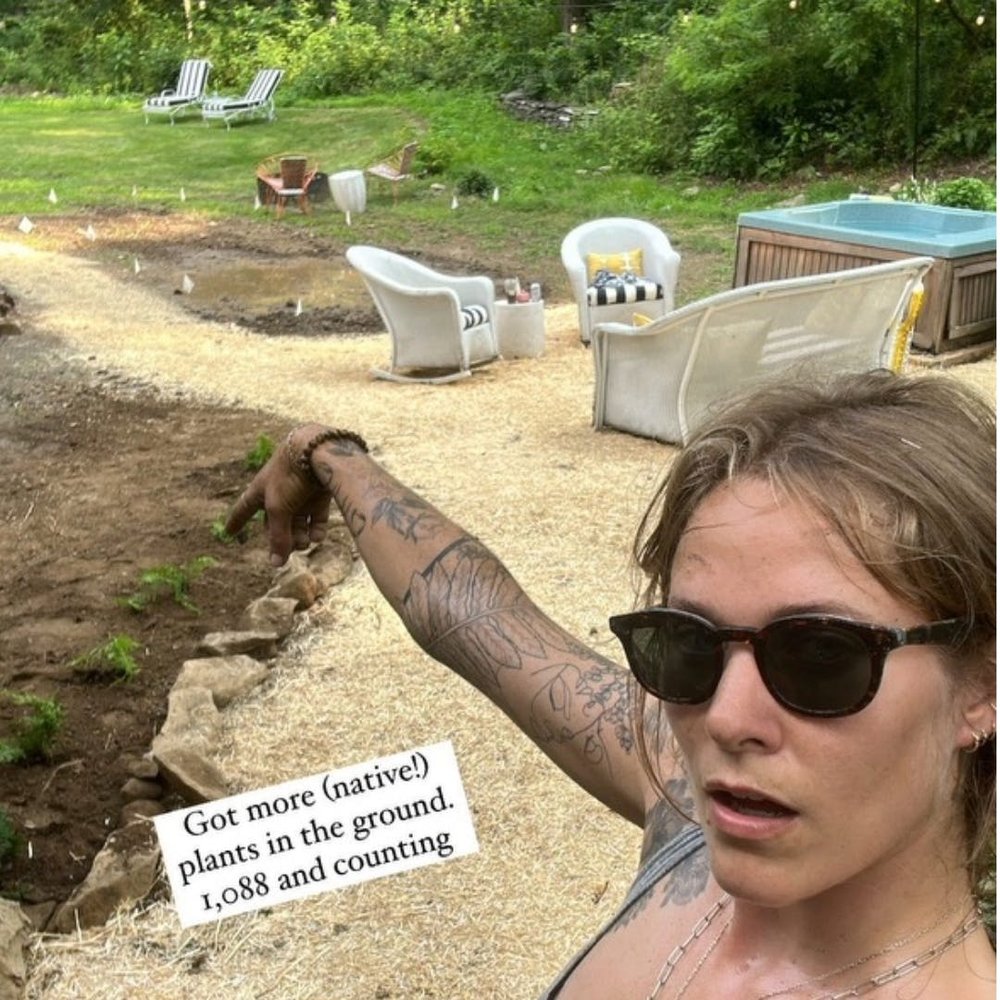
My daughter Zoe being fully herself in her garden
No. 6: Opportunities to learn
Gardening for biodiversity requires digging into research and differentiating between long-held but unscientific beliefs about gardening. I think that’s why opportunities for learning were an important theme in interviews with biodiversity gardeners but not home gardeners generally.
“[I]t’s like a research station for me. So, the fulfillment comes from watching it and learning from the minutia.” — Local Environment
No. 7: A sense of purpose — and legacy
Relaxing or working in home gardens “was associated with eudaimonic well-being, feeling life was worthwhile,” according one of the large, quantitative studies. Other researchers found through in-depth interviews,
By contributing to something larger than oneself by taking an active part in the growing process, some participants reported an increased sense of meaning and purpose in their lives. — European Journal of Ecopsychology
Biodiversity gardening added an even greater sense of contribution.
The legacy benefits (e.g. contributing to something bigger than themselves) were more salient in our findings than previous work on home gardening and well-being. — Local Environment
No. 8: A rewarding relationship
Researchers identified the relationship between the gardener and the garden as similar to a human-to-human relationship, in which ups and downs deepens the connection over time.
Individual benefits of gardening reported by participants particularly outlined the importance of the human-nature relationship in reducing isolation and loneliness. — European Journal of Ecopsychology
In terms of a meaningful relationship, many of the comments reflected the less positive aspects of the relationship, such as the failures, the poor weather, pests and diseases. … [T]hese comments were considered demonstrative of the authenticity of the relationship as one that is not perfect, but has its ups and downs. — European Journal of Ecopsychology
No. 9: Exercise
The Center for Disease Control and Prevention categorizes light yard work such as raking or pushing a lawn mower as moderate physical activity, similar to a brisk walk. Heavier yard work, like chopping wood, is considered vigorous activity, comparable to aerobics. Both large-scale studies confirmed the impact of such regular activity on overall health:
Those who reported gardening reported better general health and were more likely to meet physical activity guidelines. — Landscape and Urban Planning
While these studies found little difference between men’s and women’s attitudes toward gardening, men were generally more physically active in the garden. (Cities) However, vigorous yard work is particularly beneficial to older women, who are at greatest risk for osteoporosis; yard work is comparable to weight lifting for building bone density, better than bicycling, aerobics, walking. (Journal of Women & Aging)
No. 10: Loving your garden
Just having a garden makes people happier — but working in the garden makes them more than twice as likely to like their gardens. And the more plants, the better.
Roughly twice as many gardeners were happy with their front or back garden compared to non gardeners. Gardeners claimed to be ‘somewhat to extremely happy” with their front (60%) and back (77%) gardens, while the percentages for nongardeners was 26% and 35%. — Cities
The more vegetation the better: For each 10% of vegetation cover, the odds of being more happy with one’s garden is multiplied by 1.26, i.e., increases by 26%. — Cities
No. 11: Vitamin D
Gardening provides regular, moderate sun exposure, which causes your body to generate Vitamin D. According to the World Health Organization, lack of Vitamin D from too little sun exposure is a bigger global health issue than too much sun exposure. The number of disability-adjusted life years (DALYs) lost from Vitamin D deficiency diseases from no sun exposure would be 2,200 times the number currently lost as a result of too much sun exposure. In addition to the known deficiency diseases (rickets, osteomalacia and osteoporosis),
There are a large number of diseases possibly associated with insufficient UVR exposure – cancers of the colon, breast, prostate, ovary and others; autoimmune diseases such as multiple sclerosis, type 1 diabetes and rheumatoid arthritis; cardiovascular diseases such as hypertension, acute stroke and coronary artery disease; endocrine disorders such as type 2 diabetes; psychiatric disorders and disorders of mood; lymphomas including both Hodgkin and non-Hodgkin lymphoma. — World Health Organization
A majority of Americans – 65% – receive insufficient Vitamin D. The WHO study concludes:
It would be deleterious to health to promote high degrees of sun avoidance in populations already at risk of vitamin D deficiency disorders – the deeply pigmented or otherwise sun protected populations. — World Health Organization
No. 12: A healthier gut
We are constantly exchanging microbes with the air around us — and spending time in more biodiverse environments yields more biodiverse microbiomes.
‘When you increase the complexity of vegetation so it’s more like a natural habitat … then the aerobiome, the different microbes in the air, will be much more diverse compared to say a monoculture habitat or a sports field . The air around that habitat is really low in diversity”, says [microbiologist Jake] Robinson. — Selwa Calderbank, Radicle
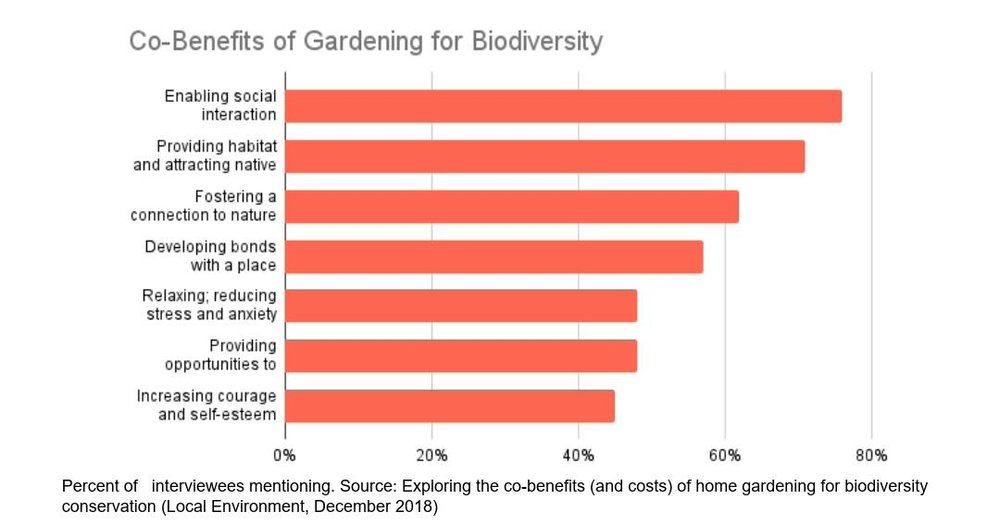
How
You’ll receive the most benefit from your gardening if you garden two or three times a week. In addition,
The data showed that more frequent gardening (i.e., 2-3 times per week) corresponded to reductions in perceived stress, increased subjective well-being and increased self-reported physical activity levels. The results are novel in that we observed a ‘dose’ effect with the perceived health benefits increasing in line with frequency of gardening activities. — Cities
The more vegetated area, the more satisfied you’ll be, too — perhaps because you’ll be spending more time taking care of your larger garden. But don’t spend all your time working. The greatest benefits were experienced by those who sit and relax in their gardens, as well as working there.
Those who both gardened and relaxed in the garden were also more likely to report good general health, high evaluative well-being, and meeting physical activity guidelines than those who did neither. Compared to those who took part in no garden activities, respondents who only gardened had better general health whilst those who only relaxed reported higher evaluative well-being. — Landscape and Urban Planning
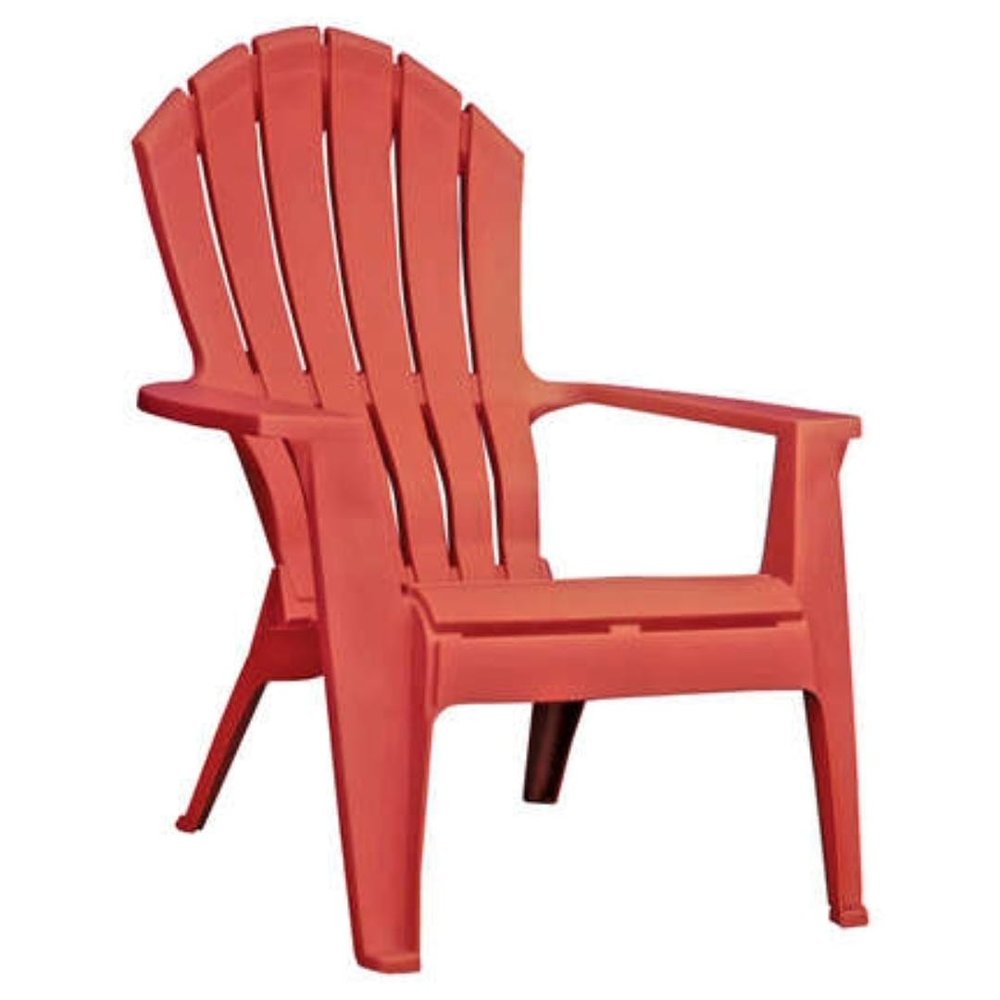
No place to relax? These Adirondack chairs are comfortable, stackable, and surprisingly attractive for $26. Available from Ace Hardware.
Wow!
Here are my recommendations to plant under a New York City redbud tree, all available from Brooklyn’s Lowland’s Nursery. All between one and three feet tall, they’d look great behind a hedge of dwarf inkberry trimmed to 18 inches. Note that many woodland perennials flower early, making the most of sunlight before trees leaf out. Long-flowering wild petunia and late-flowering white wood aster bloom into the fall. For a lush lavender-and-white bed under a tree, I’ve included Eastern blazing star, as well as ferns, for their foliage.
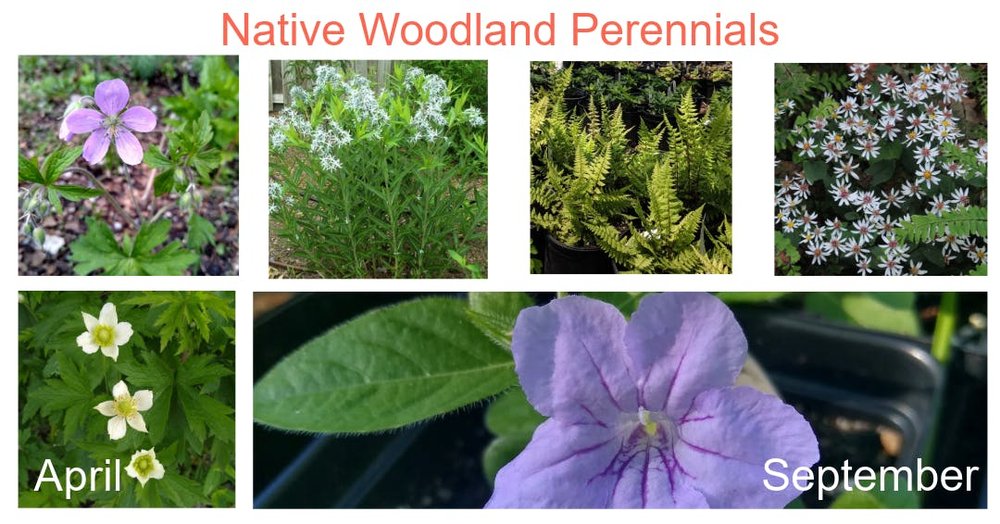
Clockwise from top left: Wild geranium (Geranium maculatum), eastern bluestar (Amsonia tabernaemontana), tall thimbleweed (Anenome virginiana), lady fern (Athyrium filix-femina), white wood aster (Eurybia divaricata), wild petunia (Ruellia humilis), and tall thimbleweed (Anenome virginiana).
Related Resources
Shocked by the WHO findings on sun exposure? Me, too. You can read the entire report here.
Have a city garden? Read #1 Design Solution for an Urban Backyard.
Itching to get your hands dirty? Save Money with Winter Sowing
